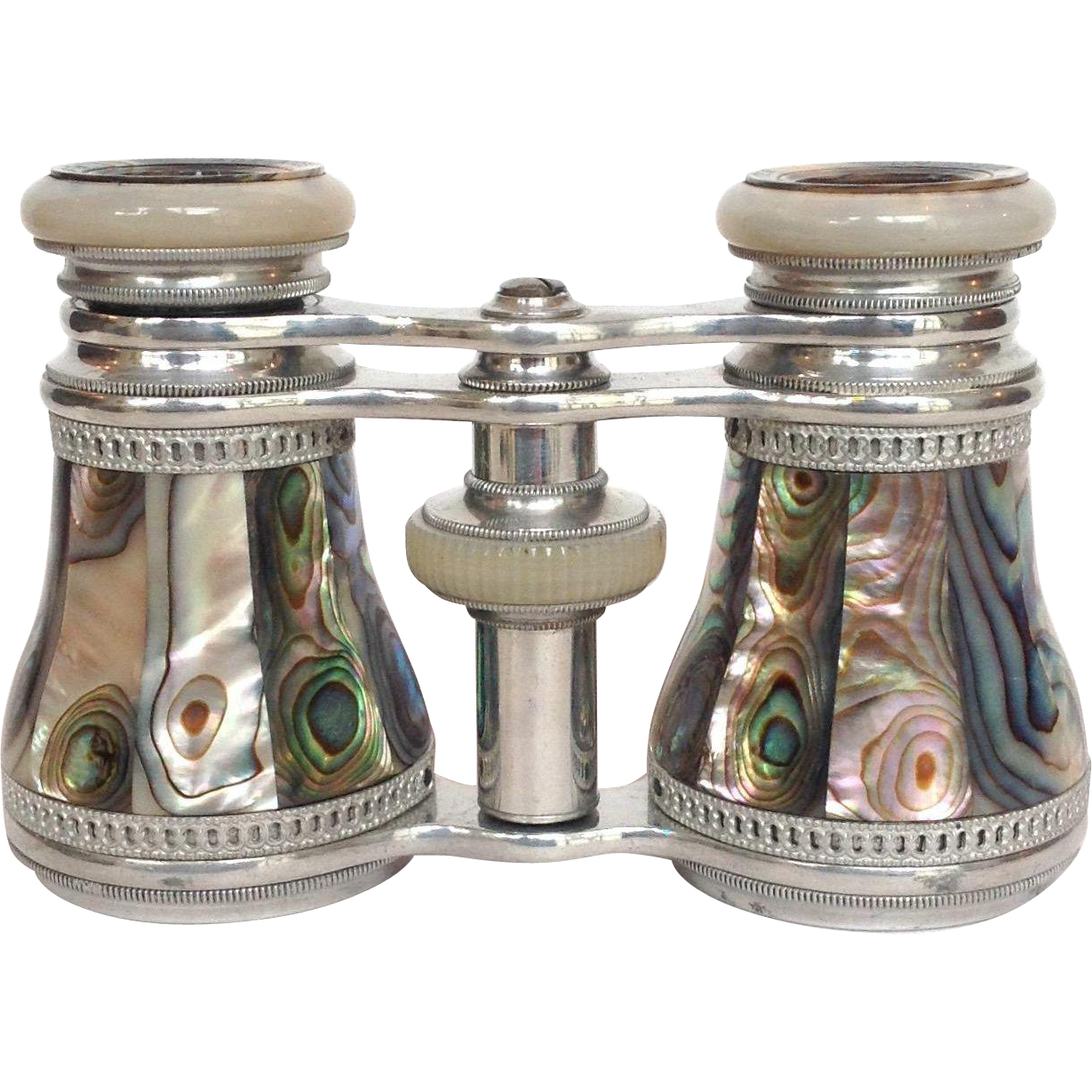Unveiling the Elegance of Opera and Theatre: A Journey Through the History, Types, and Value of Opera Glasses
Opera, with its mesmerizing blend of music, drama, and visual splendor, has been captivating audiences for centuries. To enhance the experience of every opera enthusiast, opera glasses have played a crucial role, offering a closer look at the intricate details on the stage. In this article, we embark on a fascinating journey through the history, purpose, evolution, types, and the value of antique and vintage opera glasses in today's marketplace.
The Origin and Evolution of Opera Glasses
Early Days
Opera glasses, also known as theater binoculars or opera binoculars, trace their roots back to the 19th century. In the early days of opera, venues were often large, and audience members seated at a distance found it challenging to fully appreciate the performers' expressions and the elaborate set designs. As a solution, small, handheld magnifying devices were introduced.
Paintng of woman using early opera glasses
Development of Optics
The early opera glasses were simple, consisting of a basic frame with lenses that could be adjusted manually. Over time, advancements in optics led to the incorporation of prisms, improving image clarity and brightness. This innovation revolutionized the opera glasses, making them more effective for enhancing the viewing experience.
Antique and vintage opera glasses are primarily identified by their small size, ornate designs exquisite inlays and decoration. The most collectible opera glasses are Victorian, Edwardian, Art Deco, Art Nouveau, and Russian/French made opera glasses. Collectors also desire leather and other opera glass cases.
Lorgnette Opera Glasses
The materials usually used to make opera glasses are brass, steel, gold-plated metal, sterling silver, Bakelite, silver-plated metal, celluloid, and glass. Opera glass decoration is important, and embellishments can include filagree, mother of pearl, gemstones, ivory, enamel, and bone.
Purpose of Opera Glasses
Opera glasses serve a dual purpose in the world of performing arts. Firstly, they enable the audience to see facial expressions, costumes, and other details that may be missed from a distance. Secondly, opera glasses enhance the overall enjoyment of the performance, allowing viewers to feel more immersed in the production.
Types of Opera Glasses
There are two main types of Opera Glasses: monocular and binocular.
Traditional Binoculars
The most common type of opera glasses resembles traditional binoculars, featuring a central hinge for adjusting the distance between the lenses. They are often compact, lightweight, and designed for ease of use during performances. There are subgroups of traditional binocular glasses such as Lorgnette - binoculars with an extended handle, miniature (up to 3-4cm in height), and rare, unusual binocular glasses such as Jealousy Glasses, that had a sideways mirror to allow discreet observation of other people.
Typical binocular opera glasses
Galilean Opera Glasses
Galilean opera glasses are another popular type, known for their simplicity and compact design. They operate on the principle of Galilean optics, with a convex objective lens and a concave eyepiece lens. While they are more lightweight, they may lack some of the optical advantages of traditional binoculars.
Rare and Sought-After Opera Glasses
Decorative Designs
Certain opera glasses stand out not only for their optical capabilities but also for their aesthetic appeal. Ornate designs, intricate engravings, and luxurious materials contribute to their rarity and desirability among collectors.
Lovely ornate opera glasses
Opera glass decoration is important, and embellishments can include filagree, mother of pearl, gemstones, ivory, enamel, and bone.
Limited Editions
Manufacturers occasionally release limited-edition opera glasses, often featuring unique designs, materials, or collaborations with renowned artists. These exclusive pieces can become highly sought after by collectors and opera aficionados alike.
The Value of Antique and Vintage Opera Glasses
Collectibility
Antique and vintage opera glasses hold significant value for collectors interested in historical artifacts. The craftsmanship, materials, and design of these pieces reflect the artistic and technological trends of their respective eras.
Market Trends
The value of opera glasses in the marketplace is influenced by factors such as brand reputation, rarity, condition, and historical significance. Certain brands, such as Lemaire, Zeiss, and Leitz, are particularly sought after by collectors.
Fun Fact
Opera glasses tend to weigh anywhere between 100 grams and 350 grams which although not heavy to hold up, can feel considerably heavier over the length of a 3-hour opera or play.
Preservation of Heritage
Owning a pair of antique or vintage opera glasses is not just an investment; it is a connection to the rich cultural heritage of the performing arts. Many collectors appreciate the historical significance of these artifacts and the role they played in enhancing the opera experience throughout different periods.
ANTIQUE TIFFANY & CO OPERA GLASSES BINOCULARS
You can purchase these antique Tiffany opera glasses in the Sara Jane’s Alley store. Click Here!
Opera glasses, with their fascinating history, diverse types, and intrinsic value, remain a cherished accessory for opera enthusiasts and collectors alike. As we celebrate the artistry of opera, let us also appreciate the craftsmanship and ingenuity that have gone into creating these timeless and elegant devices. Whether for the joy of opera or the allure of collecting, opera glasses continue to weave a tale of beauty and sophistication through the lens of history.
The author generated this text in part with a version of Chat GPT, OpenAI’s large-scale language-generation model. Upon generating draft language, the author reviewed, edited, and revised the language to their own liking and takes ultimate responsibility for the content of this publication. This text may include some materials in a form protected by the fair use guidelines of Section 107 of the Copyright Act. All rights reserved to the copyright owners.





